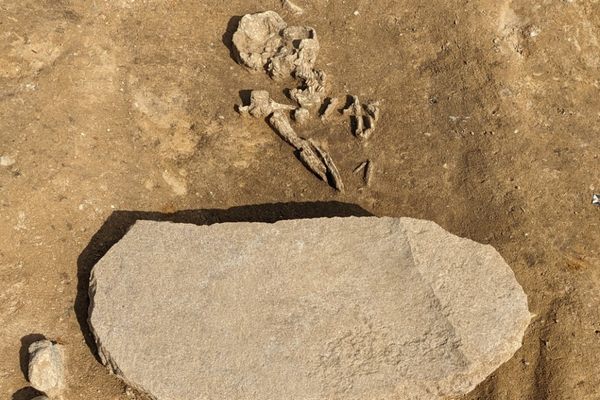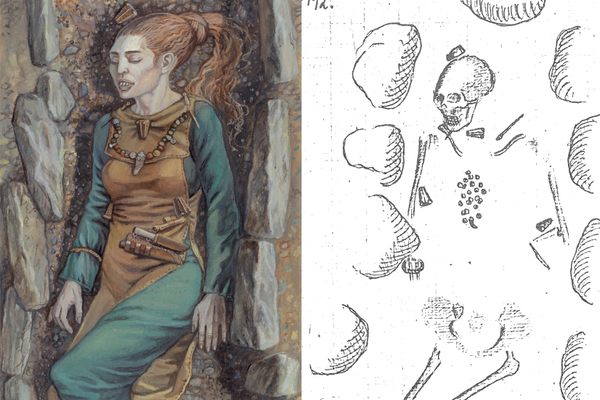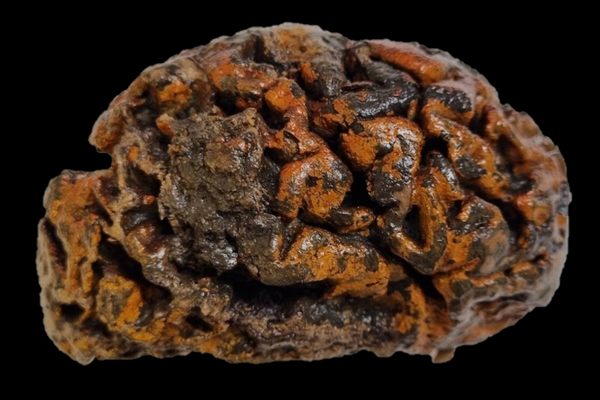Why Two Anthropologists Reconstructed Prehistoric Weaponry
Hunter-gatherers were more tech-savvy than we give them credit for.

The year is around 10,000 B.C. You’re a hunter-gatherer, living in what is today Alaska, and you’ve gone out into the frozen wilds with a group of other hunters. You’re looking for dinner. There are plants and berries to be foraged, but you’re more likely to find caribou, wild horses, and reindeer. You have spears and darts to throw at your prey. Some have points made of sharpened bone, antler, or ivory. Others have intricate, flaked stone tips. The most complicated ones are a composite of bone and stone, and have razor blade-like microblades embedded around their edges. How do you know which one is the right one to use?
Janice Wood and Ben Fitzhugh, from the University of Washington’s anthropology department, tried to answer this question by reconstructing the prehistoric projectiles and points that would have been in these hunters’ arsenal. Their research was published earlier this week in the Journal of Archaeological Science. “The hunter-gatherers of 12,000 years ago were more sophisticated than we give them credit for,” Fitzhugh said, in a statement. “They had a very comprehensive understanding of different tools, and the best tools for different prey and shot conditions.”
Wood traveled to the area around Fairbanks, Alaska, slightly east of the state’s center. There, she crafted 30 projectile points—10 of each type that archaeologists believe these ancient Alaskans used. Poplars provided the projectiles for these “arrowheads,” while birch tar helped to stick it all together. A 12,000 year old ivory point might have come from a mammoth. Instead, Wood used a commercially purchased cow bone, ground to blade-sharpness. A hammerstone was used to strike glassy black obsidian into flakes. And for the “composite” tip, Wood first sawed and sandpapered a caribou antler into a point. She then gouged a groove around its perimeter, and slid in obsidian microblades.

She had the tools, but would have to put them to the test to see how well they worked on different kinds of prey. Rather than going out into the wilderness in search of caribou, she instead fired them at two different targets, neither of them living: blocks of a clear, synthetic gelatin, to mimic animal muscle tissue, and the fresh carcass of a reindeer from a local farm. For seven hours, on a December day averaging -17 degrees Fahrenheit (-27 degrees Celsius), Wood stood in the Alaskan cold and sent her blades soaring into these targets.
It turns out that, if you’re an ancient hunter-gatherer, you want to save those composite microblade points for smaller prey—no matter where they hit, they’ll incapacitate the animal. Bone points go deep, but create narrow wounds, and might be best used to “puncture” bigger animals, like bison or rogue mammoths. And stone points cut wide wounds into animals’ flesh. You might use those to kill a moose. All of this would have been known to these sophisticated early hunters, Wood said. “It has to do with the animal itself; animals react differently to different wounds. And it would have been important to these nomadic hunters to bring the animal down efficiently. They were hunting for food.”
But these trials tell us about more than just how early humans hunted and the sophistication of their technology. They may also tell us why some of the animals they ate are now absent from the Arctic landscape—an animal that was easier to kill, like a wild horse, might have been thought of as easy prey, and so gone the way of the dodo. Most of all, Wood said, they reveal incredibly innovation in times of freezing adversity. “This reveals the human capacity to invent in extreme circumstances, to figure out a need and a way to meet that need that made it easier to eat and minimized the risk.”










Follow us on Twitter to get the latest on the world's hidden wonders.
Like us on Facebook to get the latest on the world's hidden wonders.
Follow us on Twitter Like us on Facebook